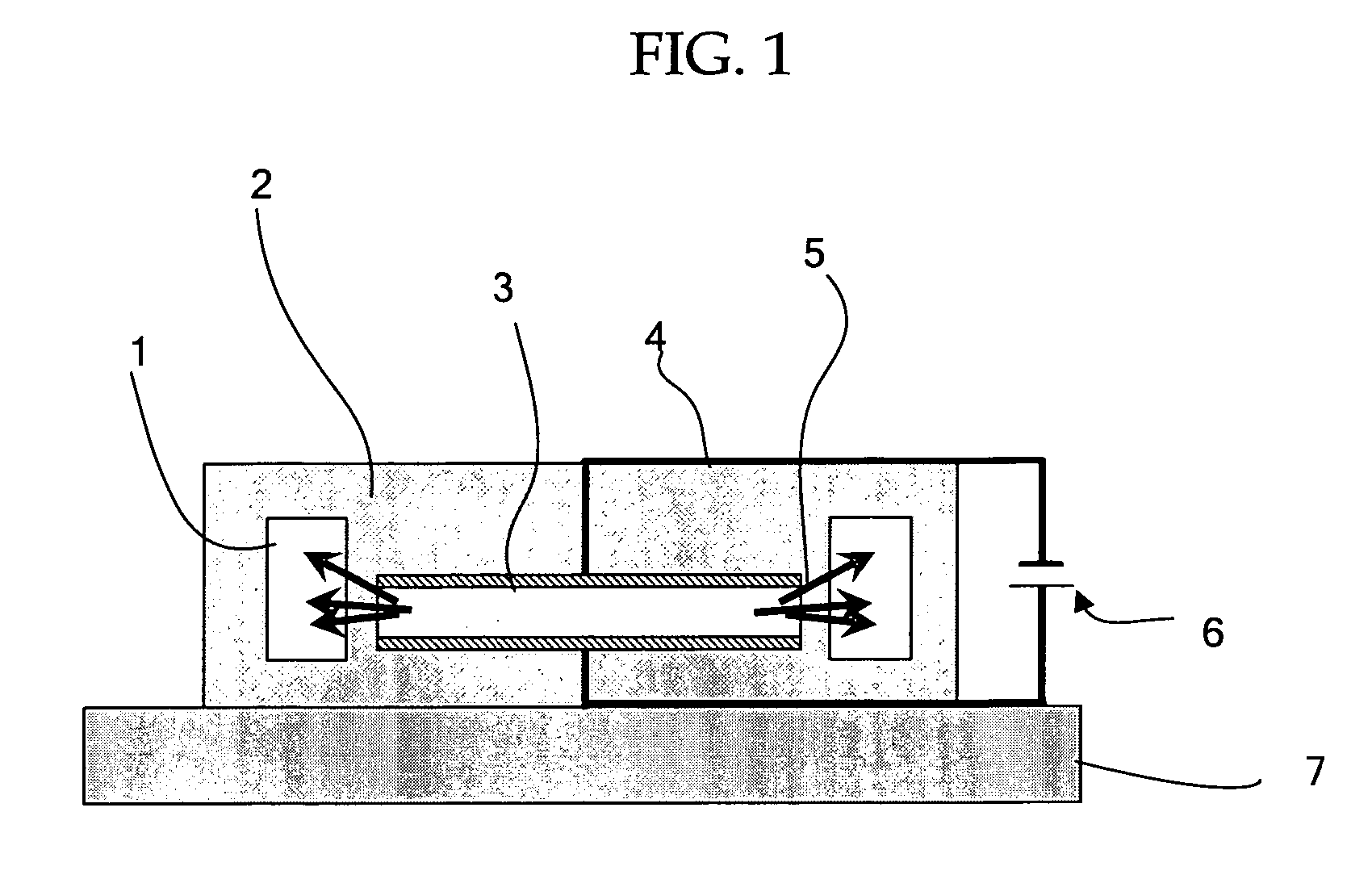Light emitting apparatus and light emitting method
a light-emitting apparatus and waveguide technology, applied in the direction of instruments, discharge tubes luminescnet screens, optical elements, etc., can solve the problems of large apparatus size, high cost various problems of inorganic semiconductor lasers, so as to reduce or suppress the loss of light guided, effectively suppress the leakage of light proceeding, and efficiently guided
- Summary
- Abstract
- Description
- Claims
- Application Information
AI Technical Summary
Benefits of technology
Problems solved by technology
Method used
Image
Examples
Embodiment Construction
Light Emitting Apparatus and Light Emitting Method
[0028]A light emitting apparatus of the present invention includes an EL emitting unit, a light emitting unit and other units appropriately selected according to requirements.
[0029]A light emitting method of the present invention includes an EL emitting process and a light emitting process, and it further includes other processes appropriately selected according to requirements. The EL emitting process may be favorably performed by means of the EL emitting unit; the light emitting process may be favorably performed by means of the light emitting unit; and the other processes may be favorably performed by means of the other units. Therefore, the light emitting method of the present invention may be favorably performed by means of the light emitting apparatus of the present invention, and the operation of the light emitting apparatus of the present invention is equivalent to the performance of the light emitting method of the present i...
PUM
 Login to View More
Login to View More Abstract
Description
Claims
Application Information
 Login to View More
Login to View More - R&D
- Intellectual Property
- Life Sciences
- Materials
- Tech Scout
- Unparalleled Data Quality
- Higher Quality Content
- 60% Fewer Hallucinations
Browse by: Latest US Patents, China's latest patents, Technical Efficacy Thesaurus, Application Domain, Technology Topic, Popular Technical Reports.
© 2025 PatSnap. All rights reserved.Legal|Privacy policy|Modern Slavery Act Transparency Statement|Sitemap|About US| Contact US: help@patsnap.com



